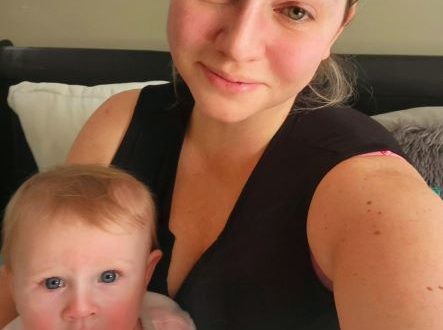
Why Breathing is so Important (and not just so you don’t die)
We’ve all heard the term “take a deep breath”. It’s a coping mechanism we’ve been taught since childhood, often when we experience moments of extreme anxiety or an uncontrolled explosion of emotion. Even now, my husband will tell me during a heated exchange to “go breathe” before things get out of hand, (or as I like to think: when I’m winning the argument and he needs to buy himself some time to collect his thoughts.)
When we’re afraid, we often take deep breaths in order to calm our nerves and help us act rationally through the fear. Women in labor are encouraged to perform breathing exercises to cope with the pain of childbirth. Snipers are taught techniques to use breath to steady the hand for a difficult shot. Even our wearable health devices chime periodically throughout the day to remind us to breathe… like our brains would ever let us forget.
So is there something to this breathing thing? Why is breathing so important? What purpose does it serve other than to keep us alive? What power is there in the breath? Let’s explore that, shall we?
Let’s start first with the mechanics of breathing. Breathing isn’t just about getting oxygen into the body. In fact, only a little more than 20% of the “air’ we breathe actually has oxygen in it. According to NASA, the rest is a combination of nitrogen (almost 80%) and about 1% of other gases like carbon dioxide, helium, argon and hydrogen. In addition, the air we breathe is chalk full of microscopic particles like aerosols, pollen, water molecules, and even pollutants. This begs the question: if our “air” is only a fifth oxygen, is that what we actually need to survive?
The air we breathe is only about 20% oxygen

The simple answer is: Yes, oxygen is essential for human beings and most other life forms to survive. Our bodies largely ignore everything else we pull into our lungs except for O2. In order to understand why oxygen is essential, a simple analogy is in order. Let’s say you are hungry, but your fridge and pantry are empty. Unfortunately, you are unable to leave the house (like me for example who is currently sitting in quarantine due to being Covid positive). Therefore, you need a third party to bring your food to you. Enter Door Dash or Grubhub. These innovative companies have developed a way to transport food from your favorite restaurants right to your door without you ever having to get off the couch. On its most basic level, oxygen functions much like these food delivery services.
As you breathe in life-giving oxygen, your body exchanges its waste product, carbon dioxide (CO2), for rich O2. Then a process called cellular respiration takes place. Cellular respiration helps your body break down glucose for energy which is then transported around the body to fuel vital (and not so vital) functions. While you are having an evening of Netfix and Chill, oxygen is Door Dashing energy throughout your body to ensure you are able to not only keep your heart beating, but also get off the couch to refill that bowl of Doritos you somehow managed to consume before the opening credits were over. (No judgement here from me. Doritos are delicious!)
When we don’t get enough oxygen, this spells bad news for our bodies. Called hypoxemia (low O2 in your blood) and hypoxia (low O2 in your tissue), the lack of oxygen for a sustained period of time can cause severe damage to organs such as your lungs, liver, heart and brain. It only takes a matter of minutes for the damage to be permanent.

Victims suffering from hypoxemia or hypoxia experience confusion, rapid breathing, slowed heart rate, sweating, coughing, and even death. Asthma is a common example of hypoxia and often requires a medicated inhaler for relief. Other conditions such as heart problems, pneumonia, fluid in the lungs, and anemia can all cause hypoxia.
Now that we know breathing is important (I’m guessing nothing in the above paragraphs was particularly shocking), is there anything more we need to know about oxygen? It pretty much seems like our body takes care of the subconcious need to breathe, so there’s probably not much else we need to worry about. Right?
Surprisingly, breathing provides many other critical benefits to the body that most of us don’t realize. In order to harness these benefits, we need to turn our breathing off of auto pilot and take the wheel ourselves.
Deep breathing can decrease blood pressure and heart rate
According to Harvard Health Publishing, deep breathing exercises, called diaphragmatic breathing or belly breathing, has many important mental and physical benefits. For starters, deep breathing “encourages full oxygen exchange” and eliminates more carbon dioxide than standard breathing. In addition, increased O2 means a slower heartbeat and potentially lower blood pressure. The reason for this is that your parasympathetic nervous system becomes activated by deep breathing which then dilates blood vessels. Dilated blood vessels slow your heart rate and increase the efficiency of blood flow, which in turn reduces blood pressure.
Slower heart rates and lowered blood pressure can be a contributing factor in the reduced risk of heart attack. A lower heart rate is also a signal for the body to relax. Cortisol production is slowed (cortisol is the stress hormone) and endorphin production (the “feel good” chemical) is triggered. Believe it or not, you may be able to breathe your way to happy. Further studies have shown that increased endorphins can help individuals cope with pain. Therefore, you shouldn’t roll your eyes during your labor and delivery class as they make you practice those “hee hee hoo’s” over and over again- they may actually come in handy!
When you think of detoxifying the body, the kidneys, liver, bladder and bowels most often come to mind. (Maybe you also conjur up surpressed memories of super gross green shakes or colon cleanses that kept you glued to the toilet for hours on end.) Shockingly, only about 30% of our detoxifying activities take place in one of these organs. The majority actually comes from breathing and the expulsion of carbon dioxide. Therefore, what you push out of the body on an exhalation is just as important as what you bring into your body during inhalation! Here’s a real shocker… when we lose weight, we are breathing out a portion of the fat we burned off. Who knew?!
I can think of a no more relevant a topic during a global pandemic as “immunity”. Did you know that breathing deeply helps boost your immune system? According to Urban Balance, a well oxygenated body has more energy and is more efficient at transporting nutrients and vitamins throughout its many systems. This helps keep the blood clean, and cleaner blood makes it more difficult for illnesses to set up shop in your body. In addition, the reduction of cortisol and increased production of “happy hormones” allows your body to better fight off infection and heal faster than a stressed and tired body would.
O2 can help support a more efficient immune system
Taking time out of your schedule to breathe deeply can also help you reset from the chaos of your day. Pausing for a moment to intentionally breathe helps rewire neuropathways from those focused on stress, to those that help promote positive changes in the body. Turning the subconscious away from stress reduces cortisol secretions. Cortisol, in addition to being a stress hormone, also promotes insulin production and suppresses our metabolism, which can cause weight gain. Increased insulin production can lead to insulin resistance, which is the first stop on the diabetes train. Clearly there was something to our parents telling us to “take a deep breath” when we were losing our shit as toddlers!
Now that you know the benefits of deep breathing, how can you incorpoarte it into your daily life? For starters, don’t ignore those friendly little nudges on your health devices. Many of them come with customizable reminders that you can set at your convenience. Strive for at least one 5 minute deep breathing session per day.
There are a variety of apps, both free and paid, that guide you through a range of breathing exercises and meditations. I am a huge fan of Insight Timer for Android (also available as “Insight” for iPhone). This app offers customized reminders, a huge library of free guided breathing meditations, and valuable tidbits on the benefits of breathing. I must admit, I always felt meditation was for hippies and Buddhist monks, but ever since my final pregnancy, I’ve been a firm believer. The visualization methods of meditation help focus my mind and keep breathing exercises engaging and fun.

Deep breathing in the form of meditation can help you overcome anger and frustration, better prepare you for sleep, and give you a shot of calming energy in the midst of a chaotic day. Coupled with visualization and/or timing techniques, you can unlock a plethora of benefits.
Meditation can take many forms and doesn’t need to embody stereotypical “ohms” and gentle gong ringing (although there is a time and a place for this kind of practice.) The internet is brimming with practical breathing and meditation practices you can do while driving, seated at your desk, or lying in bed.
My Go-To Deep Breathing Exercises
While I’m not as disciplined in daily deep breathing as I would like to be, there are three key exercises I use on a regular basis to help me tackle various situations and tap into some of those critical oxygen-rich benefits I described above. I encourage you to find a few exercises that serve you well and become a natural go-to when you need them.
Stress Relief
Remember the benefits of eliminating excess CO2 and increasing “happy hormone” production? This exercise has you covered with an extended exhalation to get rid of CO2 .
- Sit with your feet flat on the floor.
- Breathe in deeply for 5 seconds until your belly fully expands.
- Exhale slowly for a minimum of 7 seconds, until all of the air is out of your lungs. Shoot for an exhalation that is no less than 2-3 seconds longer than your inhalation
- Repeat five times.
Overcoming Anger
This exercise looks absolutely ridiculous, but I swear is a game changer. It makes all the difference between me tackling an extreme stressor calmly or exploding and regretting it later.
- Your posture and position don’t matter. This exercise works wherever and however you are, so just go for it.
- Curl the sides of your tongue up to form a taco shape.
- Breathe slowly and deeply through your taco tongue, feeling the air cool as it flows over your tongue and into your throat.
- Breath for three minutes until you feel cooled and in control.
Falling Asleep
Running a busy company and managing a household of 5 means my brain is constantly working. That makes falling asleep quite difficult. This exercise helps quiet my mind and preps me for a restful sleep.
- Lay in bed in the posture that is most comfortable for sleep.
- Envision yourself in an elevator. You have a lot on your mind, so you have to address each issue one by one before going to sleep.
- Imagine each issue as a floor on your stop in the elevator.
- Grant yourself three breaths per floor to address each issue.
- When your breaths are over, acknowledge that you have to move on, but the floor (and issue) will be available for you to visit again tomorrow after you sleep.
- As you progress down in your elevator, visualize each floor as getting progressively more comfortable and relaxing.
- For me, my final stop is a cozy library with overstuffed couches and stacks of books waiting to be read. I envision myself curling up on a soft sofa with a new book and imagine what that book would be about, what kind of wine I’d enjoy while reading it, and any other details that bring a smile to my face. I become so immersed in the details, that I don’t even notice when I finally drift off to sleep.





